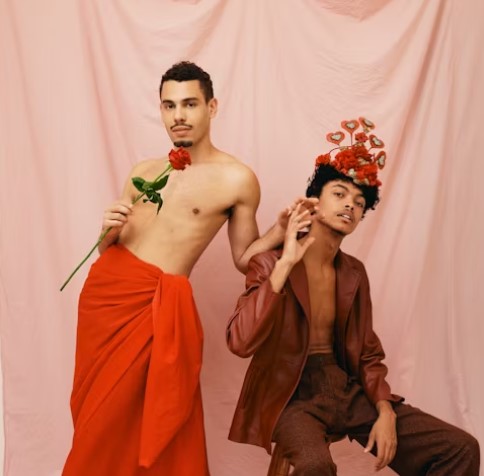Pop culture has always been a powerful mirror and, at times, a driving force for societal change. For the gay community, the journey from invisibility to vibrant representation in music, fashion, and art reflects a profound evolution of identity and acceptance. Understanding this shift is key to appreciating how LGBTQ+ lives are increasingly celebrated and integrated into the global narrative.
Music: Anthems of Empowerment and Open Expression
Music has long been a lifeline for the gay community, offering anthems of defiance, love, and liberation.
- From Coded Messages to Open Pride: Early gay artists often used coded lyrics, but today’s icons proudly sing about their identities and relationships, inspiring millions. Artists like Lil Nas X, Troye Sivan, and Kim Petras openly embrace their queer identities, influencing mainstream pop.
- Genre-Bending and Inclusivity: The rise of diverse LGBTQ+ artists across genres, from pop and hip-hop to indie and electronic, has broken down barriers and fostered greater inclusivity in the music industry.
- Community Building: Music festivals and concerts often become de facto safe spaces, where gay and queer fans gather, fostering connection and a sense of shared experience, much like online gay chat rooms provide a virtual meeting ground.
Fashion: Breaking Norms and Celebrating Individuality
Fashion, by its very nature, is a form of self-expression. The gay community has historically used it to communicate, subvert norms, and celebrate individuality.
- Challenging Gender Stereotypes: Queer designers and stylists have consistently pushed boundaries, blurring traditional gender lines and introducing fluidity into mainstream fashion. Think of icons like Harry Styles or Billy Porter challenging menswear norms.
- Visibility on the Runway and Red Carpet: LGBTQ+ models, designers, and stylists are increasingly visible and celebrated in high fashion, bringing diverse perspectives to global style.
- Pride as a Fashion Statement: Beyond explicit Pride merchandise, the aesthetics of the gay community – vibrant colors, bold statements, and a fearless approach to personal style – continue to influence broader fashion trends.
Art: Reflecting Realities and Inspiring Dialogue
Visual arts, theater, and literature have provided crucial platforms for gay voices and experiences, often paving the way for broader understanding.
- Documenting History: Artists have played a vital role in documenting LGBTQ+ history, struggles, and triumphs, ensuring these narratives are preserved and shared.
- Challenging Perceptions: Contemporary LGBTQ+ artists continue to create powerful works that challenge societal norms, foster empathy, and inspire dialogue around identity, love, and belonging.
- Accessibility Through Digital Platforms: Online galleries, digital art installations, and social media have made queer art more accessible than ever, allowing global audiences to engage with diverse gay and LGBTQ+ narratives. This echoes how online gay chat connects individuals across distances.
The Impact on Gay Identity and Beyond
The growing visibility and authentic representation of gay identity in pop culture have profound effects. They offer validation for LGBTQ+ youth, educate allies, and normalize queer lives within the broader social fabric. This cultural evolution is not just about entertainment; it’s about shaping a more inclusive world where every gay individual feels seen, valued, and empowered.
